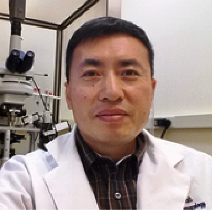
Peijun Li
Principal Investigator Second Affiliated Hospital Wenzhou Medical University Wenzhou, China
Title: Loss of CLOCK results in dysfunction of brain circuits that underlies pediatric focal epilepsy
Biography
Biography: Peijun Li
Abstract
Because molecular mechanisms underlying refractory focal epilepsy are poorly defined, we performed transcriptome analysis on human epileptogenic tissue. Compared with controls, expression of Circadian Locomotor Output Cycles Kaput (CLOCK) is decreased in epileptogenic tissue. To define the function of CLOCK we generated and tested the Emx-Cre; Clockflox/flox and PV-Cre; Clockflox/flox mouse lines with targeted deletions of the Clock gene in excitatory and parvalbumin (PV)-expressing inhibitory neurons, respectively. The Emx-Cre; Clockflox/flox mouse line alone has decreased seizure thresholds, but no laminar or dendritic defects in the cortex. However, excitatory neurons from the Emx-Cre; Clockflox/flox mouse have spontaneous epileptiform discharges. Both neurons from Emx-Cre; Clockflox/flox mouse and human epileptogenic tissue exhibit decreased spontaneous inhibitory post-synaptic currents. Finally, video-EEG of Emx-Cre; Clockflox/flox mice reveals epileptiform discharges during sleep and also seizures arising from sleep. Altogether, these data show disruption of CLOCK alters cortical circuits and may lead to generation of focal epilepsy, which suggest that the circadian pathway may be a promising target for therapeutic intervention.

